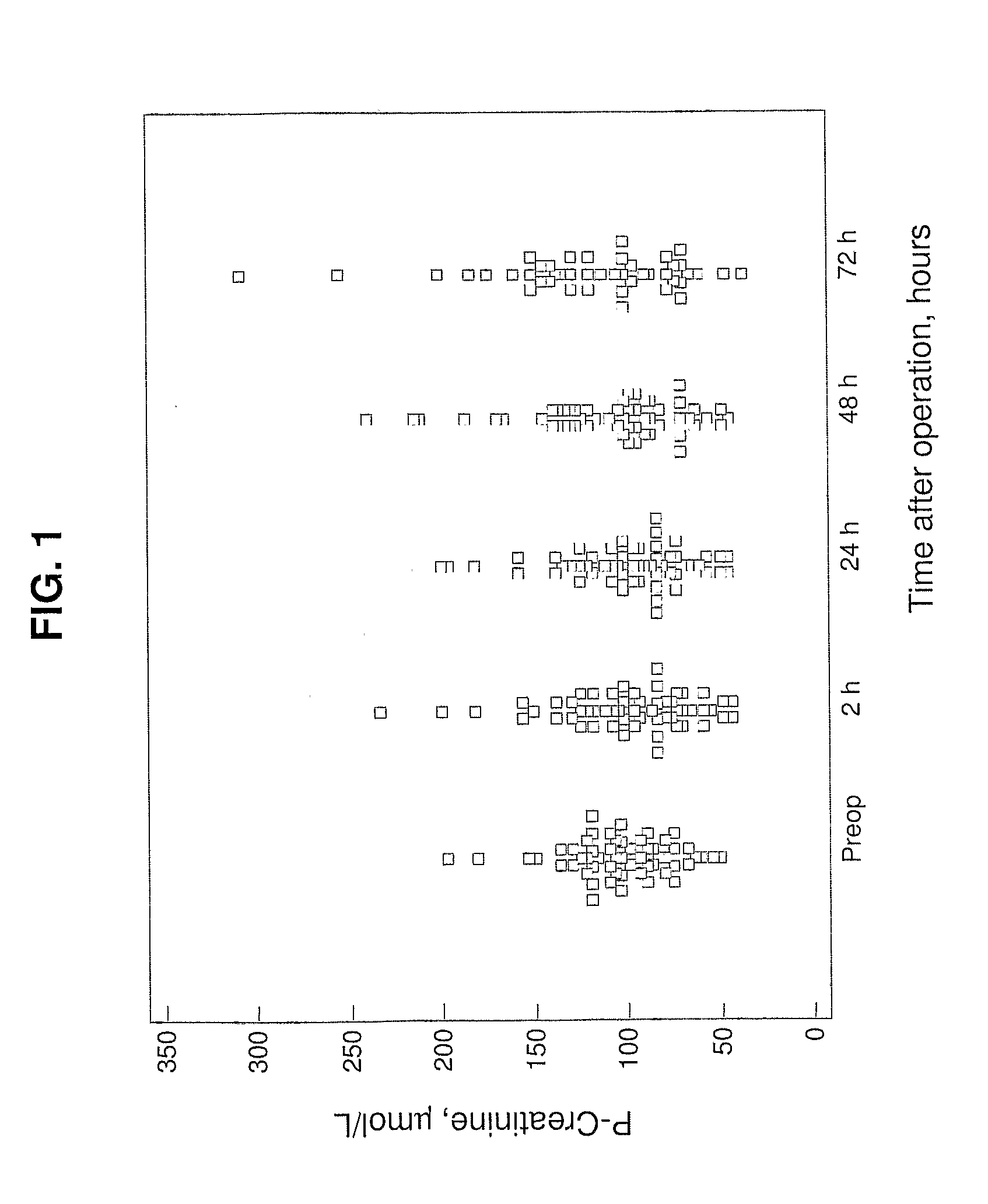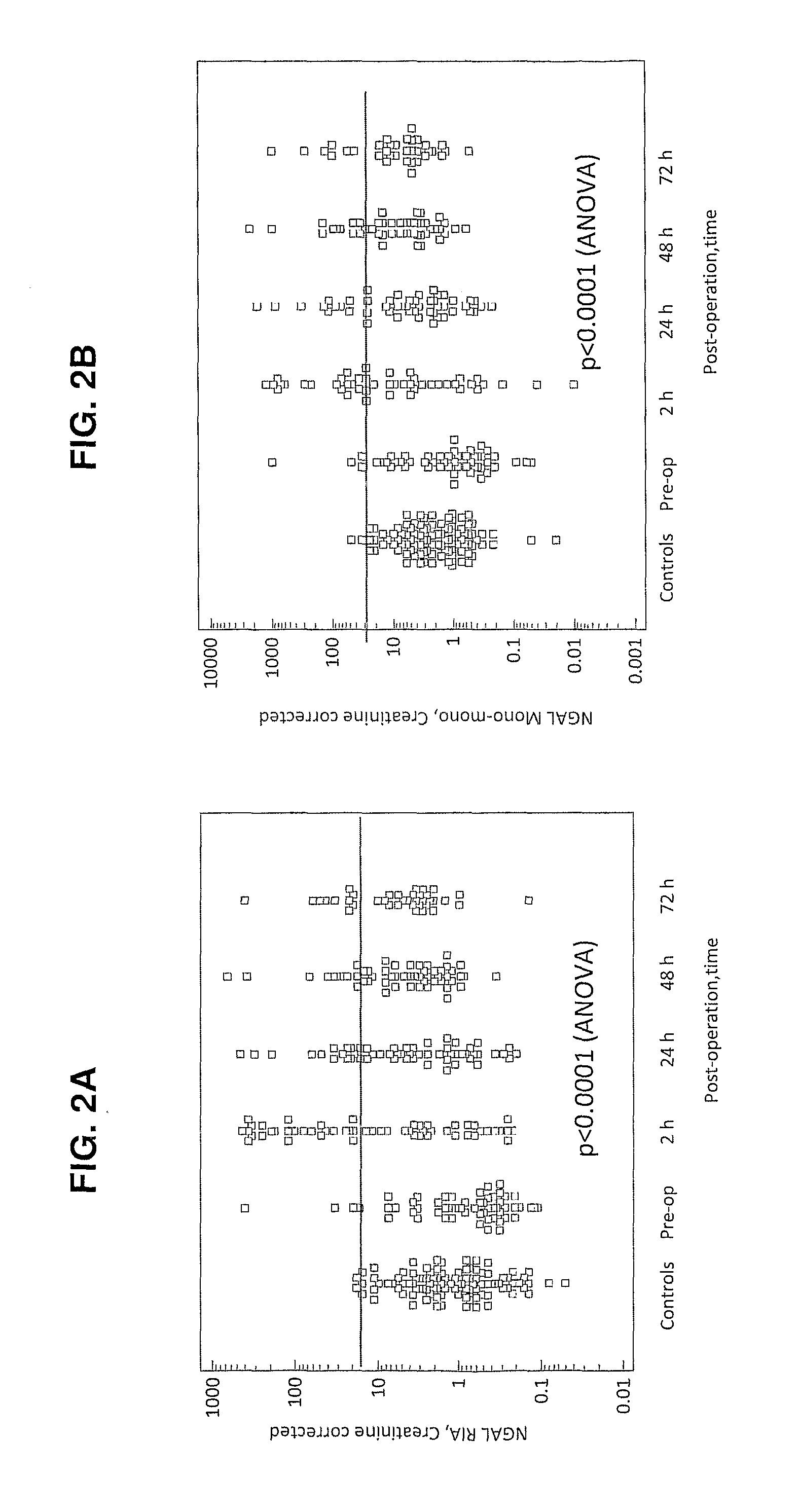Methods, Devices and Kits for Detecting or Monitoring Acute Kidney Injury
a kidney injury and kidney technology, applied in the field of acute kidney injury detection and monitoring kits, can solve the problems of difficult to detect acute kidney failure in early stages, dialysis dependency, and difficulty in detecting acute kidney failure, so as to improve the sensitivity of ngal as a biomarker and improve the detection sensitivity
- Summary
- Abstract
- Description
- Claims
- Application Information
AI Technical Summary
Benefits of technology
Problems solved by technology
Method used
Image
Examples
example 1
[0042]This Example describes a study of NGAL determinations using NGAL antibody having binding capacity with more than two NGAL protein epitopes and comparisons with NGAL determinations using only two monoclonal antibodies.
[0043]Patients and Samples
[0044]A total of 59 adult patients undergoing cardiac surgery at the Uppsala University Hospital were included in the study. The age of patients ranged from 27-85, with a mean of 63, and the patients comprised 42 males and 17 females. The cardiac surgeries comprised 23 coronary artery bypass grafting, 15 aortic valve replacement, 4 mitral repair, 3 combined procedures, 8 left ventricle assist device implantations, and 6 other procedures.
[0045]Urine and blood samples were collected before operation and at various time points (2, 24, 48 and 72 hours) following cardiac surgery. The urine samples were immediately centrifuged at 3,000 rpm at 4° C. for 15 min. EDTA-plasma was obtained by centrifugation of the blood at 3,000 rpm at 4° C. for 15 ...
example 2
[0074]This Example describes a study of NGAL determinations with respect to monomeric, dimeric and heterodimeric forms in determining the NGAL protein origin.
[0075]Urine Samples and Separation on Gel Filtration
[0076]In total, 33 urine samples were collected pre-operation and at 2 h and 24 h time points following cardiac surgery. The urine samples were immediately centrifuged at 3,000 rpm for 15 min at 4° C. and stored in aliquots at −20° C. Gel filtration of one urine sample at 2 h post operation was performed on a Superdex™ 75 HR 10 / 30 prepacked column using the FPLC-system (Amersham Pharmacia Biotech AB, Uppsala, Sweden). Fractions of 250 L were collected and stored at −20° C. The elution buffer was PBS. NGAL in the fractions was determined using the RIA and ELISAs described below.
[0077]Sensitive ELISAs for NGAL Quantification
[0078]Six ELISAs based on different antibodies for NGAL quantification were employed, namely 1) Mab697-polyclonal (the monoclonal-polyclonal ELISA as describ...
PUM
 Login to View More
Login to View More Abstract
Description
Claims
Application Information
 Login to View More
Login to View More - R&D
- Intellectual Property
- Life Sciences
- Materials
- Tech Scout
- Unparalleled Data Quality
- Higher Quality Content
- 60% Fewer Hallucinations
Browse by: Latest US Patents, China's latest patents, Technical Efficacy Thesaurus, Application Domain, Technology Topic, Popular Technical Reports.
© 2025 PatSnap. All rights reserved.Legal|Privacy policy|Modern Slavery Act Transparency Statement|Sitemap|About US| Contact US: help@patsnap.com



